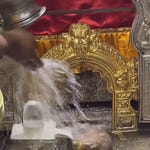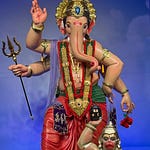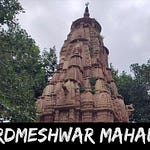The Divine Embodiment of Cosmic Energy
In the heartland of Southern India, where the sacred winds whisper ancient chants through lush groves and temples echo the footsteps of sages, resides a divine force known as Akasa Devi — a manifestation of Maa Adishakti Mahakali, worshipped in a unique, mysterious, and deeply esoteric form. Revered as the Celestial Mother, Akasa Devi translates to the “Goddess of the Ether,” representing boundless cosmic space and supreme Shakti.
While countless temples are devoted to Mahakali across India, Akasa Devi remains a lesser-known but highly potent form, rooted in the Dravidian spiritual tradition. Her divine seat in Tamil Nadu carries a sacred vibrational frequency that draws tantriks, yogis, bhaktas, and seekers alike.
Origin and Foundation of Akasa Devi Worship
The origin of Akasa Devi worship lies deeply embedded in pre-Vedic, Dravidian tribal and tantric traditions. The Goddess is considered an ancient form of Mahakali, representing pure formless energy, the void, and the Akash Tattva — one of the five primordial elements.
Legends say that thousands of years ago, sages and siddhars received divine visions of a supreme feminine energy descending from the heavens into the dense jungles and hill regions of Tamilakam (ancient Tamil Nadu). Here, the Akasa Devi manifested not in idols of stone or metal but in energy fields, sacred groves, and elemental forces. Her presence was felt, not seen. Worship was done through mantras, yagnas, trance rituals, and deep meditation.
Over centuries, temples and shrines began emerging, often atop hillocks, near waterfalls, caves, or banyan groves, marking places where lightning had struck, or visions were experienced. One such temple, believed to be the most powerful, is located in a remote area near Madurai or Theni district (names often kept secret by locals and initiated devotees).
Historical Timeline and Development
5000+ years ago (Pre-Vedic period): Tribes and tantrics begin elemental worship of the feminine Akashic force.
2000 BCE - 500 BCE: Siddhars and Rishis of Tamilakam document meditative experiences of Akasa Devi.
Post-Sangam period (300 CE – 900 CE): Mahakali worship spreads, and Akasa Devi is identified as her sky-form.
Medieval Period (1000 CE – 1600 CE): Local kings and queens fund secret shrines and sponsor night-yagnas.
Colonial period (1700 – 1947): Akasa Devi worship moves underground due to persecution and missionary activity.
Modern Era: Akasa Devi temples re-emerge as sites of tantric pilgrimage, often restricted or unmarked.
Religious and Spiritual Significance
Akasa Devi is Mahakali in her most formless, omnipresent aspect. As the goddess of ether, she rules over:
Space, sky, and universal consciousness
Hidden spiritual realms (Akaashik Records)
Cosmic time and destruction of karmas
Tantric and yogic awakening
In many ways, she is the origin and destination of all energies. Her worship is believed to burn away lifetimes of karma, awaken Kundalini, and bless seekers with inner realization. She is also considered the patron goddess of spiritual warriors, ascetics, and those walking the dark night of the soul.
Puja and Rituals
Daily Practices:
Brahma Muhurta (3:30 AM – 5:00 AM): The most auspicious time for her darshan and abhishekam.
Mantra Japa: “ॐ क्रीं कालिकायै नमः” and “ॐ ऐं ह्रीं श्रीं अकाशकाली देव्यै नमः” are most potent.
Offerings: Hibiscus flowers, black sesame, camphor, turmeric paste, milk, coconut, and red cloth.
Lighting Akhanda Deepam (eternal flame) is mandatory in most rituals.
Special Occasions:
Amavasya (New Moon Nights): Most powerful for her upasana. Tantric rituals are conducted through the night.
Navratri: All 9 nights are observed with separate elemental rituals culminating in Mahakali’s fiery form.
Kali Chaudas: Deep occult rituals, blessings for fearlessness and protection.
What to Do at the Temple
Arrive before sunrise, ideally during Brahma Muhurta.
Purify yourself — physically, emotionally, mentally.
Sit in silence for at least 21 minutes under the temple tree or inner sanctum if permitted.
Recite her mantra 108 or 1008 times on a Rudraksha mala.
Participate in the abhishekam, if allowed — this involves ritual bathing of the yantra or Shila.
Seek blessings from the temple pujari or head tantric, who may give you personal guidance.
What Not to Do
Do not photograph or record rituals, especially those performed during Amavasya or night hours.
Avoid non-vegetarian food, alcohol, or intimacy for 3 days prior to your visit — purity is mandatory.
Do not disrespect the silence or meditative environment — phones must be switched off.
Do not visit just out of curiosity — she is a powerful goddess, and casual visitors may feel overwhelmed.
Do not speak of the temple’s internal rituals publicly — these are sacred and often passed down orally among initiated devotees.
The Glorious Mysteries of Akasa Devi
Invisible Presence: Some claim you can hear chants, bells, and whispers though no one is present.
Sudden Wind Movement: Even on a still day, strong gusts blow inside the sanctum during puja.
Unseen Guardians: Devotees speak of vanishing dogs, birds, or sadhus who give darshan and disappear.
Dream Visitations: First-time devotees often report seeing Akasa Devi in dreams weeks before the actual visit.
Shakti Pat: Many collapse in trance or experience spontaneous kriyas during rituals.
Devotees’ Testimonies and Life Impact
Those who have worshipped Akasa Devi sincerely report:
Breakthroughs in spiritual sadhana
Relief from generational curses and black magic
Clarity of purpose and inner vision
Unexplainable protection from dangers
Empowerment, fearlessness, and fierce feminine strength
She becomes not just a deity but a constant force in a devotee’s life — a living presence guiding decisions, dissolving illusions, and protecting with motherly wrath and love.
Visiting Akasa Devi Temple: Travel Guidance
Nearest Cities: Madurai, Theni, or Dindigul (exact location is often disclosed by word of mouth).
How to Reach: From Madurai airport or station, take a cab or bus to the foothills region. Often, one must trek or walk through forests or small village trails.
Where to Stay: Basic dharamshalas and lodges in nearby villages. Some temples offer overnight shelter.
Best Time to Visit: October to March (cooler months). Avoid monsoon.
Language: Tamil is primary, but temple priests often understand Sanskrit and Hindi for religious communication.
A Call to the Seeker
Akasa Devi is not merely a temple deity — she is the unmanifest cosmic energy, the sky above your soul, the truth that burns karma and illusion alike. Her temple, though hidden, calls only those who are ready — for transformation, for surrender, for awakening.
She cannot be found.
She must be called.
And when she comes, your life is never the same again.
🙏 ॐ ऐं ह्रीं श्रीं अकाशकाली देव्यै नमः। 🙏
May the grace of Akasa Devi fall upon you.
May the sky within you awaken to Her infinite light.










